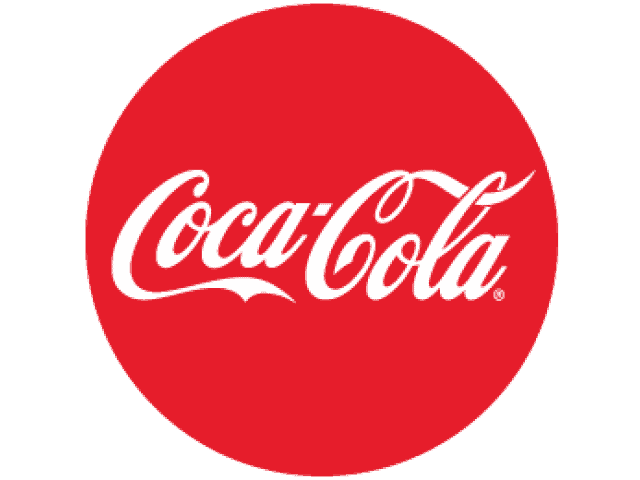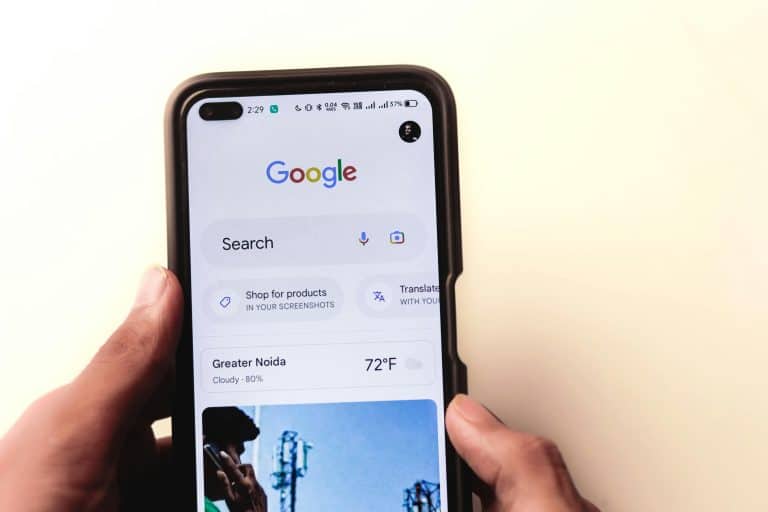In today’s competitive market, standing out isn’t just about having a great product or service—it’s about how your audience perceives you. That’s where a cohesive brand identity steps in. Your brand identity is more than just a logo; it’s the heart and soul of your business, shaping how your audience connects with your story and why they choose you over others.
As Forbes notes, brand identity has become essential not only for attracting customers but also for fostering internal alignment. A strong brand can inspire loyalty from both your team and your audience, creating a seamless narrative that promotes trust, credibility, and growth. It’s the ultimate power move for businesses looking to thrive in a noisy, fast-moving marketplace.
In this guide, we’ll walk you through how to build a brand identity from scratch. From understanding your core values to crafting visuals, voice, and online presence, you’ll discover everything you need to create a brand that resonates both inside and out.
But First, What is Brand Identity?
Let’s clear this up: brand identity isn’t just a logo or a catchy tagline (though those are important).
It’s the personality of your business—the way your brand looks, feels, and speaks to people. Think of it as the story you’re telling to your audience every time they interact with your company, from your website design to your packaging, and even your customer service tone.
A brand identity is made up of all the elements that set your business apart: your logo, typography, color scheme, brand voice, and core values. These components work together to create a cohesive image that not only draws in customers but also aligns your team around a shared vision. When done right, it makes your business instantly recognizable and unforgettable.
As HubSpot highlights, a strong brand identity is essentially a promise to your audience. It’s about shaping how people feel when they interact with your company. Whether it’s trust, inspiration, or excitement, your brand identity should resonate and leave a lasting impression.
How To Build a Brand Identity
Step 1: Understand Your Brand’s Core Values and Mission
Every great brand starts with a solid foundation, and that foundation is built on your core values, mission, and vision. These three elements act as your brand’s North Star, guiding every decision you make and shaping how your audience perceives you.
- Brand Purpose: Why does your business exist? Beyond making a profit, what positive impact do you aim to create in the world?
- Mission: This is your day-to-day driver—a statement that defines what you do, how you do it, and who you do it for.
- Vision: Your long-term dream for your business. What change do you hope to inspire five, ten, or even twenty years down the line?
Your answers will help you define a mission-driven brand identity that resonates authentically.
Let’s look at a few iconic examples:
- Patagonia: Driven by sustainability, their core values include environmental responsibility and ethical business practices.
- Nike: Their mission is to inspire every athlete to reach their full potential (and they believe everyone is an athlete).
When you align your branding with your core values and mission, you create more than just a product—you build trust, loyalty, and purpose that set you apart. This step is the bedrock of defining a brand identity that truly connects.
Step 2: Know Your Target Audience
You can’t build a brand identity that resonates if you don’t know who you’re talking to. Understanding your target audience is critical for crafting a brand that speaks directly to their needs, desires, and emotions. When your audience feels seen and understood, they’re far more likely to trust and connect with your business.

- Start by defining your audience. One effective method is to create buyer personas—detailed profiles of your ideal customers. These should include demographics (age, location, profession), psychographics (interests, values), and challenges they face.
- Next, dive into customer pain points and preferences by researching reviews, surveys, or social media conversations.
- Finally, ensure your brand messaging aligns with what your audience cares about. For example, if your customers value sustainability, emphasize eco-friendly practices in your messaging.
When you meet your audience where they are, you position your brand as the solution they’ve been searching for.
Step 3: Develop Your Unique Brand Positioning
Your brand positioning is what makes your business stand out in a crowded market. It’s how you occupy a unique space in the minds of your customers by highlighting what sets you apart. A strong brand positioning strategy is essential for building loyalty and staying competitive.
Follow these steps to craft a unique positioning statement:
- Identify Your Unique Selling Proposition (USP)
- What does your brand do better or differently than others? Focus on your strengths and what your audience values most.
- Understand Your Competitors
- Research competitors to pinpoint gaps in the market that your brand can fill.
- Write Your Positioning Statement
- Format: [Your Brand] helps [Target Audience] with [Unique Solution/Benefit] by [How You Deliver It].
- Example from a well-known brand: Burt’s Bees creates natural, eco-friendly personal care products for environmentally conscious consumers by using responsibly sourced ingredients and sustainable packaging.
By positioning your brand clearly, you’ll communicate your value in a way that resonates with your audience and sets you apart.
Step 4: Design Your Brand’s Visual Identity
Your visual identity is the first thing people notice about your brand—and first impressions matter. From your logo to your typography, these elements work together to tell your brand’s story at a glance. Let’s break it down:
1. Logo Design
Your logo is the face of your brand. A memorable logo should be simple, versatile, and reflective of your core values. For example, Nike’s swoosh is a minimalist icon of movement and performance.
Pro tip: Test your logo across different mediums—websites, packaging, and social media—to ensure it works everywhere.
Need help crafting a logo that stands out? At Pascual Creative, we specialize in creating logos that embody your brand’s personality and resonate with your audience.
2. Color Palette
Colors evoke emotion and build connection. A carefully selected color palette can make your brand instantly recognizable. For example, Coca-Cola’s red symbolizes energy and passion, while Tiffany & Co.’s blue conveys luxury and sophistication.

Use color psychology to align with your brand’s personality—for instance, greens for sustainability or blues for trustworthiness.
3. Typography
Fonts aren’t just letters—they’re tone-setters. Whether it’s a modern sans-serif for a sleek tech company or a playful handwritten font for a kid-friendly brand, your typography should reflect who you are. Consistency across all materials is key to keeping your brand recognizable.
4. Tools and Resources
Platforms like Adobe Illustrator or Canva are great for DIY design work. But if you’re looking for cohesive, polished visuals that align with your brand strategy, working with a professional agency can save you time and elevate your brand.
Ready to bring your vision to life? Pascual Creative offers custom branding services, combining strategy with creativity to design visual identities that leave lasting impressions.
Step 5: Create a Consistent Brand Voice and Tone
Your brand voice is how your business “speaks” to your audience, shaping how they perceive and connect with you. A well-defined voice makes your brand memorable and builds trust across every touchpoint—whether it’s on your website, social media, or even your customer service emails.
What is Brand Voice?
Your brand voice reflects your personality, values, and mission through the language and tone you use. It’s not just what you say, but how you say it. A consistent voice creates a sense of familiarity and ensures your messaging feels authentic, no matter where your audience encounters your brand.
How to Define the Right Tone
Start by asking: Who is my audience, and how do I want them to feel when interacting with my brand? Then, determine which tone best resonates with them:
- Formal vs. Conversational: A corporate consultancy might lean toward formal, while a DTC (direct-to-consumer) brand often opts for friendly and casual.
- Energetic vs. Calm: Fitness brands like Peloton use motivational language, while wellness brands like Calm take a soothing approach.
Your tone should reflect your audience’s preferences and your brand’s unique personality.
Examples of Consistency Done Right
- Mailchimp: A lighthearted, approachable voice that simplifies complex marketing tools.
- Apple: Sleek, aspirational messaging consistent with its focus on innovation and sophistication.
Feeling stuck on how to define or refine your brand’s voice? At Pascual Creative, we specialize in crafting consistent brand messaging that aligns with your identity and speaks directly to your audience.
Step 6: Build a Strong Online Presence
In today’s digital-first world, your online presence is often the first impression your brand makes. From your website to your social media profiles, every element should reinforce your brand identity and communicate your value clearly.
Your Website: The Digital Hub of Your Brand
A well-designed website is non-negotiable for building credibility and trust. Ensure your site is:
- Responsive: Your design should adapt seamlessly to mobile, tablet, and desktop devices.
- SEO-Optimized: Incorporate relevant keywords, metadata, and fast-loading pages to boost visibility.
- On-Brand: Your visuals (logos, colors, and typography) and messaging should reflect your identity and align with your audience’s expectations.
Your website isn’t just a digital storefront—it’s a storytelling platform. It should guide visitors effortlessly, from understanding your mission to taking action, like making a purchase or contacting you.
Social Media: Your Brand’s Daily Voice
Social media is where your brand can engage authentically and build relationships. To strengthen your social media branding:
- Align profiles and bios with your brand’s voice and visuals. Use your logo as the profile image and craft bios that communicate your mission.
- Post consistently, blending valuable content with a relatable tone.
- Respond to comments and messages to foster trust and loyalty.
Step 7: Implement Your Brand Across All Touchpoints
Consistency is the secret to a memorable brand. Once you’ve defined your identity, it’s time to implement it across every customer touchpoint—both online and offline.
That said, your brand should shine in every interaction, including:
- Packaging: Use your logo, colors, and typography to create a cohesive unboxing experience.
- Email Signatures: Ensure every team member uses the same design and messaging style.
- Marketing Materials: Brochures, business cards, and advertisements should reflect the same visual and written identity.
Additionally, your team is an extension of your brand. Conduct staff training to ensure everyone—from customer service to sales—represents the brand’s tone, values, and messaging accurately. When employees embody your brand, it strengthens brand alignment across all interactions.
Lastly, use tools like brand guidelines and digital asset management platforms to ensure every element stays consistent, even as your business scales.
Take Your Brand Identity to the Next Level
Building a cohesive brand identity is about more than just aesthetics—it’s about creating a lasting connection with your audience. From defining your core values to designing visuals and ensuring consistency across every touchpoint, a strong brand identity sets you apart in today’s competitive market.
Ready to elevate your brand? Reach out to Pascual Creative today and let’s create a cohesive, compelling identity that reflects your vision and fuels your growth. It’s time to take your brand to the next level!



